The process of creating this performance entailed quite a bit of transcription. When possible, we used a score as reference and listened to the recordings until we found the proper excerpts. However, in the first movement, VTaH took small pizza slices of a recording which they added to and then took away. The resulting sounds were so short that it was impossible to locate them in the score. Instead, we employed a strategy of simply mimicking what we heard to write the notes that we played. The timing of one revolution on a 33 1/3 rpm turntable corresponds to 4 beats at 132 bpm, and this gave us our tempo.
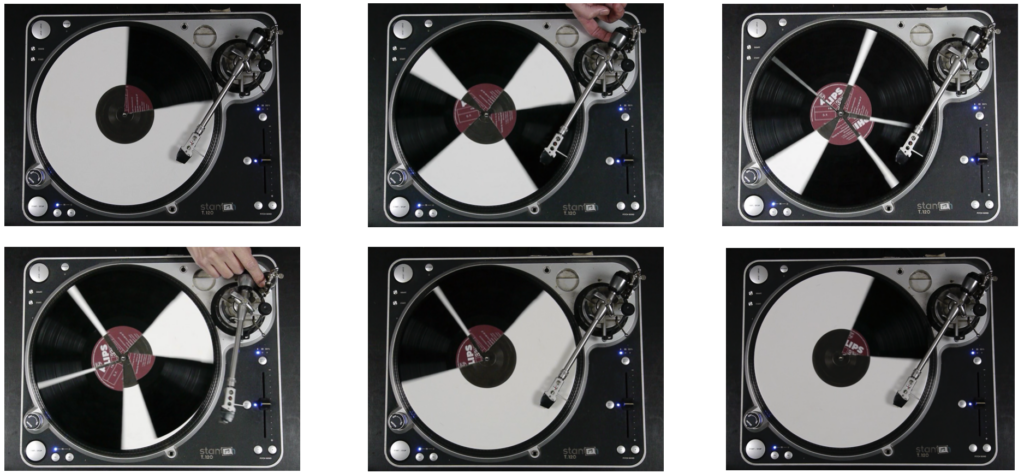
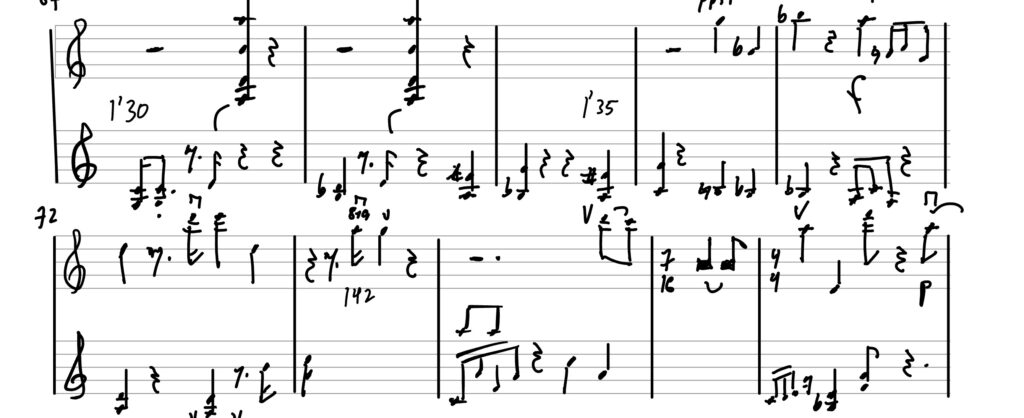
The second movement contains longer excerpts since there are only two crescents of about 1/3 to 2/3.
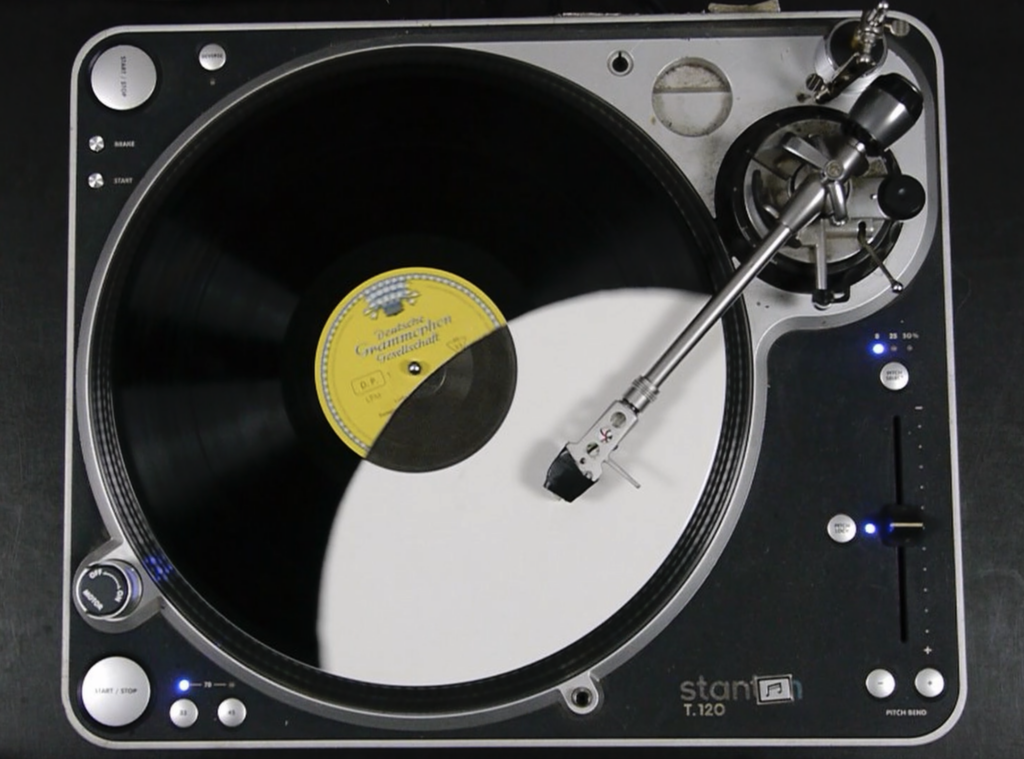
So here it was possible to find each excerpt in the score and paste them together.
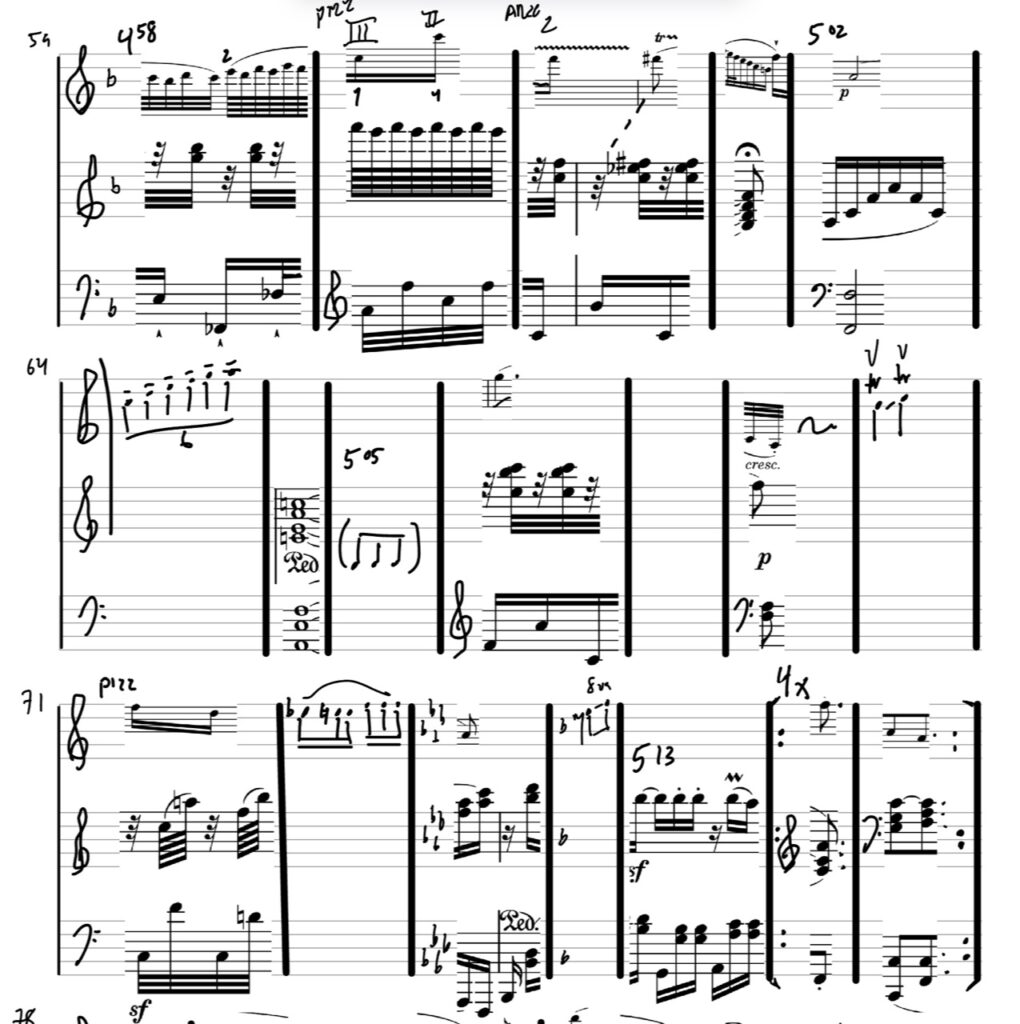
4 beats at 132 bpm is about 1,8 seconds, and the record was cut roughly into thirds, so every other measure lasts about 0.6 seconds, becoming one beat at 100 bpm, and every other measure about 1.2 seconds, or 50 bpm: so a sort of 3/4 waltz rhythm governs the form, one that can almost be felt as the length of the excerpts becomes normalized as the piece progresses.
The third movement, like the first, has much more of a 132 feel again, and the excerpts are even longer (at least in the beginning), making it by far the easiest movement to find the scored part for:
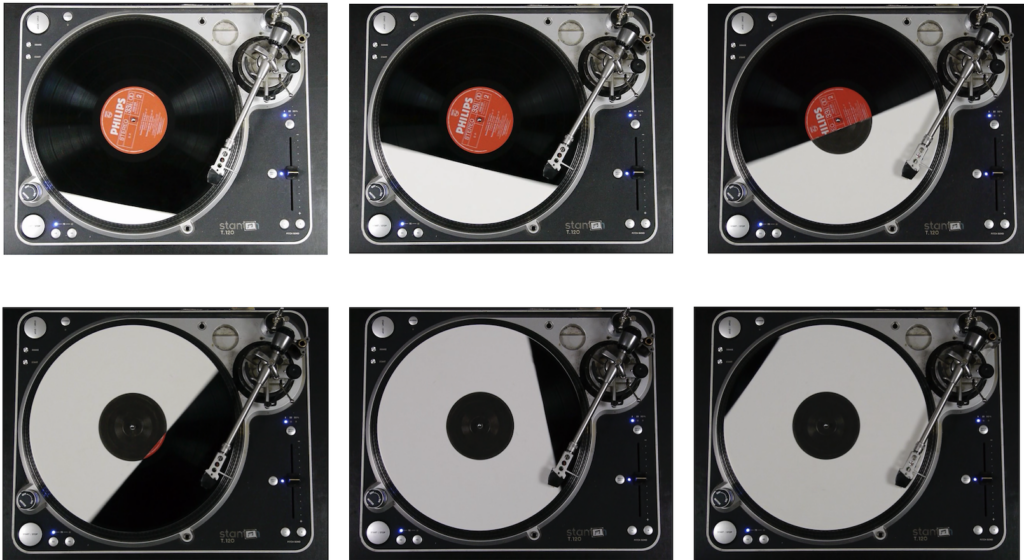
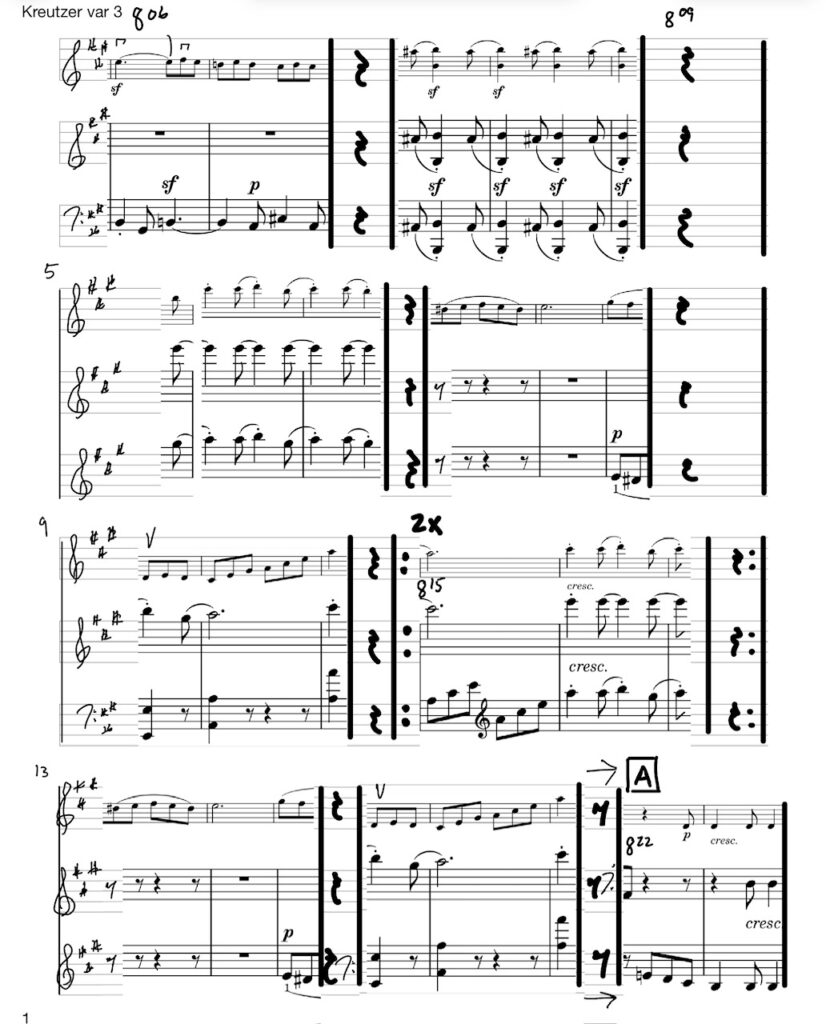
When we perform live, we have a film of the records behind us on a large screen for the audience, and we also have a smaller version on a computer which we consult as we play.
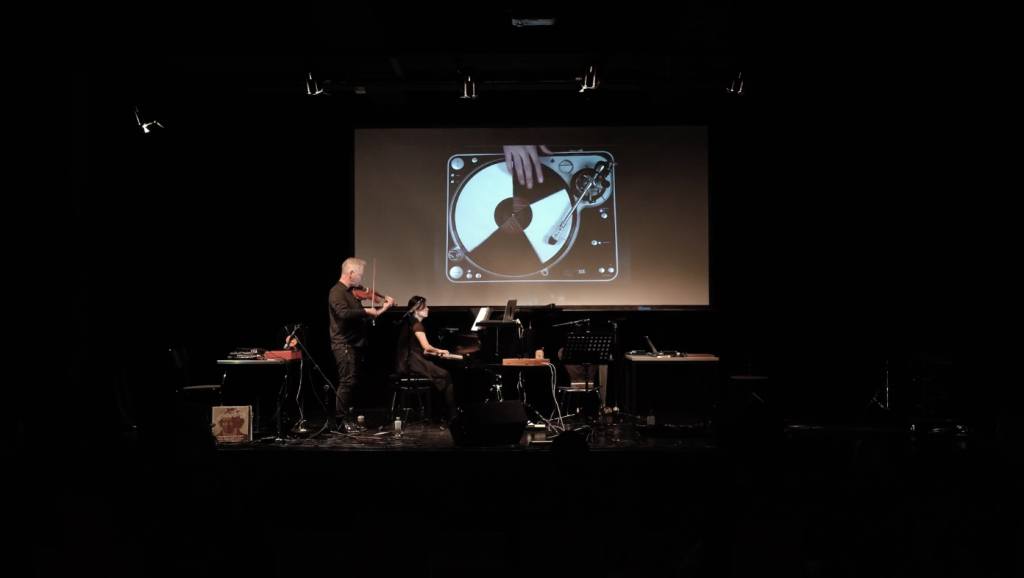
We have also made three filmed recordings of the work: one has our playing live to the records, with the silent film showing the LP in the upper right corner, like a translator for the hearing impaired.
Another is us playing live with the film behind us.
The third is just the visual score with the original sounds on the right and our performance on the left. This way one can hear both versions at once, or toggle between the L and R to hear one or the other.
